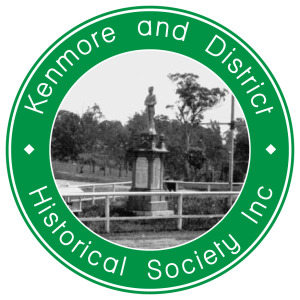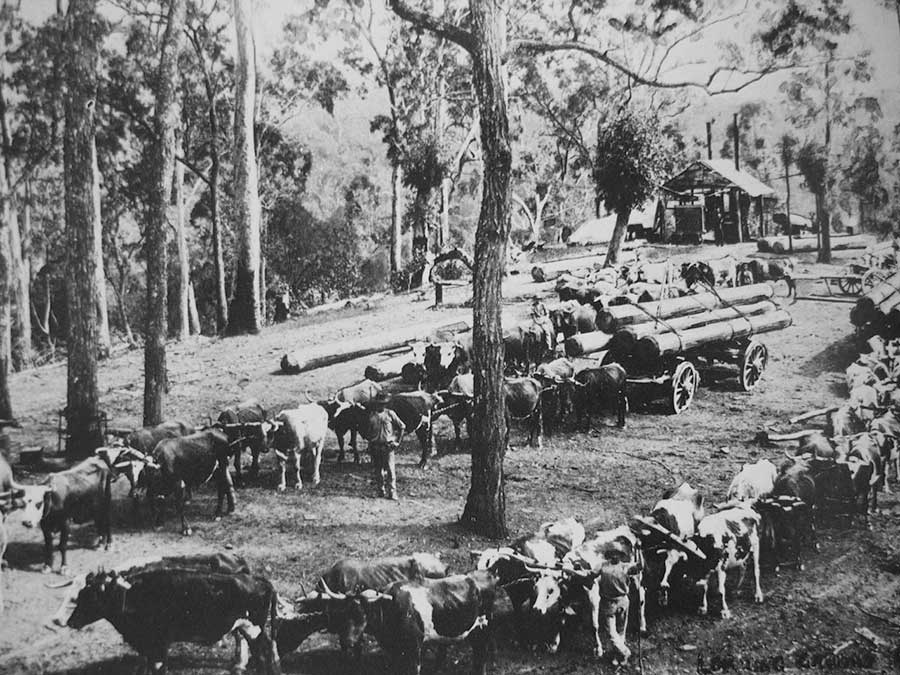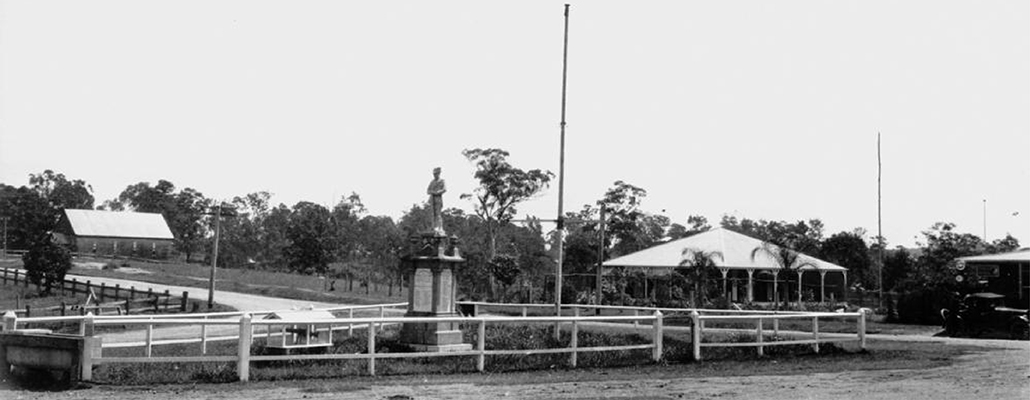A History of Kenmore
1842 Moreton Bay District open for free settlement
The Moreton Bay district was opened for free settlement in 1842. In the late 1840s the land was surveyed for sale with the first purchases being made in July 1850.
Queensland became a separate colony in 1859 and gave immediate priority to immigration, with land availability being an incentive. In the 1860s many settlers purchased smaller farms in Fig Tree Pocket, Brookfield and Moggill. Timber-getters also came for the fine cedar and hoop pine. They rafted the timber down Moggill Creek to the river and then to sawmills in Brisbane. Later there were sawmills at Kenmore and Brookfield.
Moggill Road was surveyed in 1849, but, along with other roads, remained primitive for some decades. The Brisbane River remained a main transport corridor for some time. Dairying was an important local industry. Crops grown included potatoes, maize, arrowroot, sugar and grapes; cotton was experimented with. Later, pineapples were grown and poultry farming was undertaken. There were also five private slaughter yards in the Kenmore district. From 1910 for some years there were Chinese market gardeners on the flats along Cubbela Creek.
1880 Kenmore identified as a suburb
About 1880 Andrew Todd from Scotland purchased 100 acres near the centre of present-day Kenmore. He named his property Kenmore Park after his home town in Scotland. It was from this time that Kenmore was identified as a separate area.
The community became more organised and the first churches were built in the 1870s. The first hall was on Moggill Creek with the larger Orange Lodge being built in 1880s on Moggill Road. This also was used as the first school in Kenmore until the Kenmore State School building was erected in 1904. Small businesses emerged; two blacksmiths and a general store – all near the current Kenmore Roundabout. Other shops did not open until the 1950s when farms were being subdivided into housing estates. This was the beginning of Kenmore becoming a thriving and vibrant suburb.
1920 Kenmore War Memorial was erected
The war memorial was erected in 1920 with funds raised from the public. It was originally located on a traffic island near the corner of Brookfield and Moggill Roads. The monument is a life-sized statue of a light-horseman on an ornate base. It was made by A L Petrie & Sons, monument maker of Toowong. On the sides of the base are the names of the men who were in the Boer War (1899-1902), the Great War (1914-1918) and at Gallipoli; those who returned and those who gave their lives are listed. They came from the broader region including Kenmore, Moggill, Brookfield, Fig Tree Pocket and Pullenvale. Other conflicts commemorated are World War II, the Malayan Emergency, the Korean War and the Vietnam War.
The war memorial was re-located twice; once in 1969 into the Village car park and again in 1988 to the new Pike Place Park.
More information about the Kenmore War Memorial can be found here with information on the local men of Gallipoli can be found here.
Bullock teams were a common sight in early Australia. Image courtesy SLQ Neg. 34694
Kenmore Park original house c1880s. Image courtesy SLQ Neg. 44638
Kenmore War Memorial at the junction of Moggill and Brookfield Roads Kenmore c1920s. Image courtesy SLQ Neg. 64619





